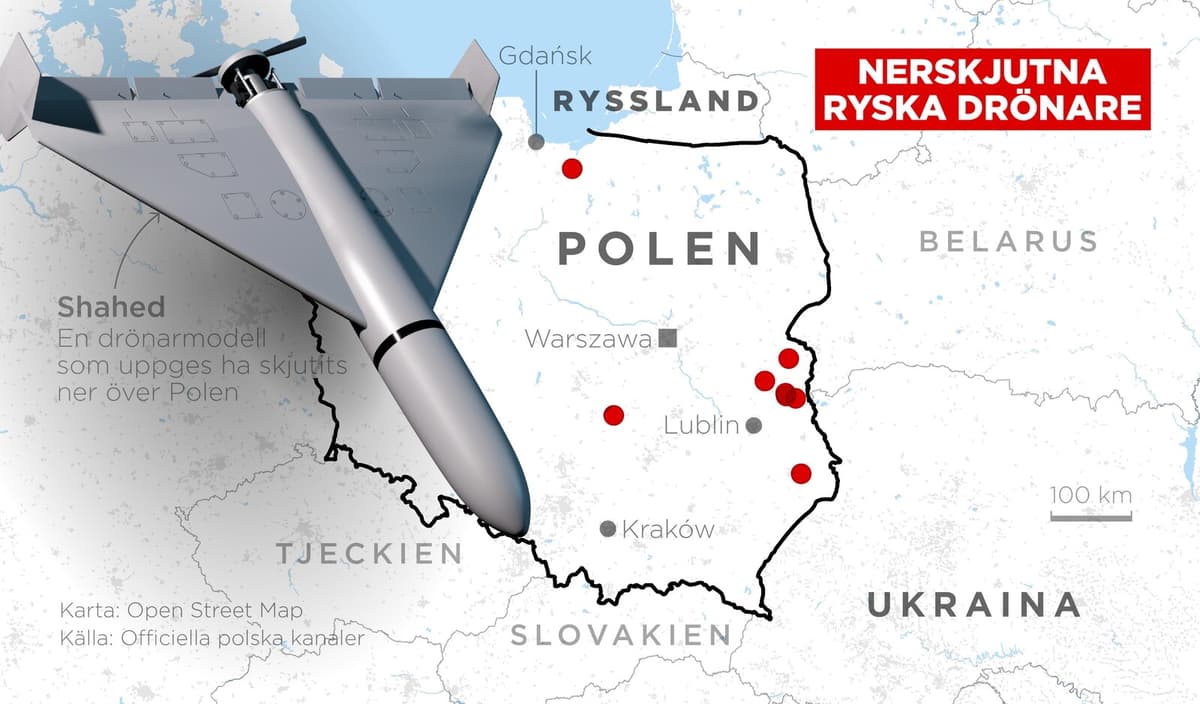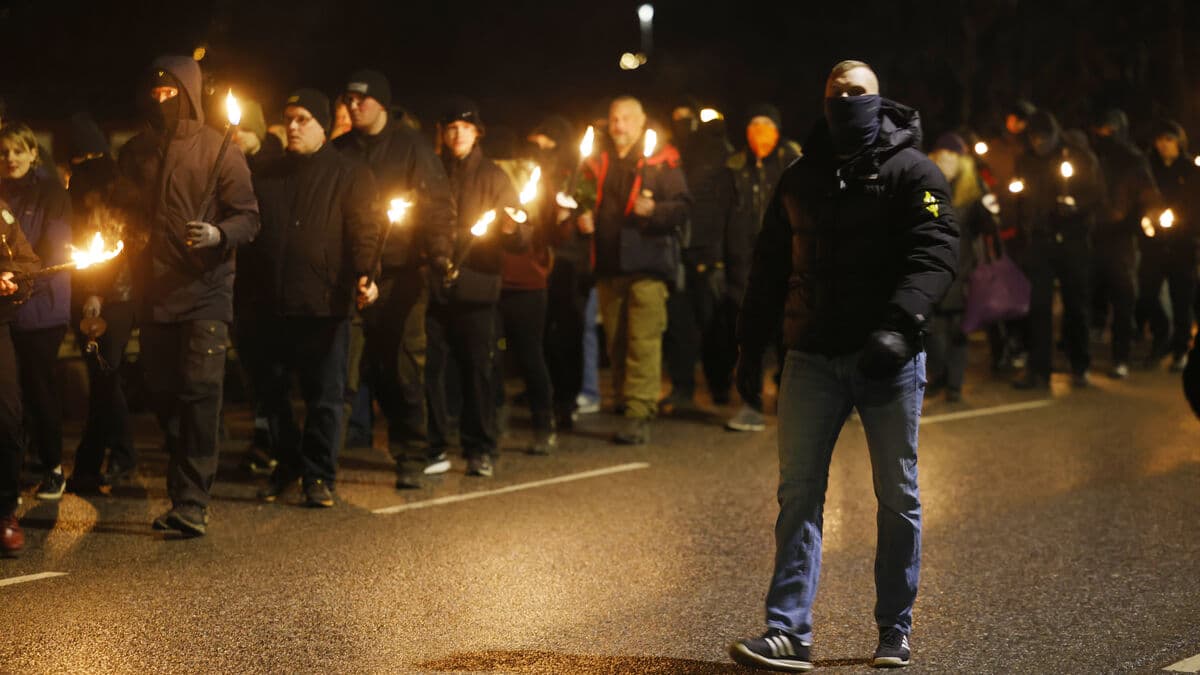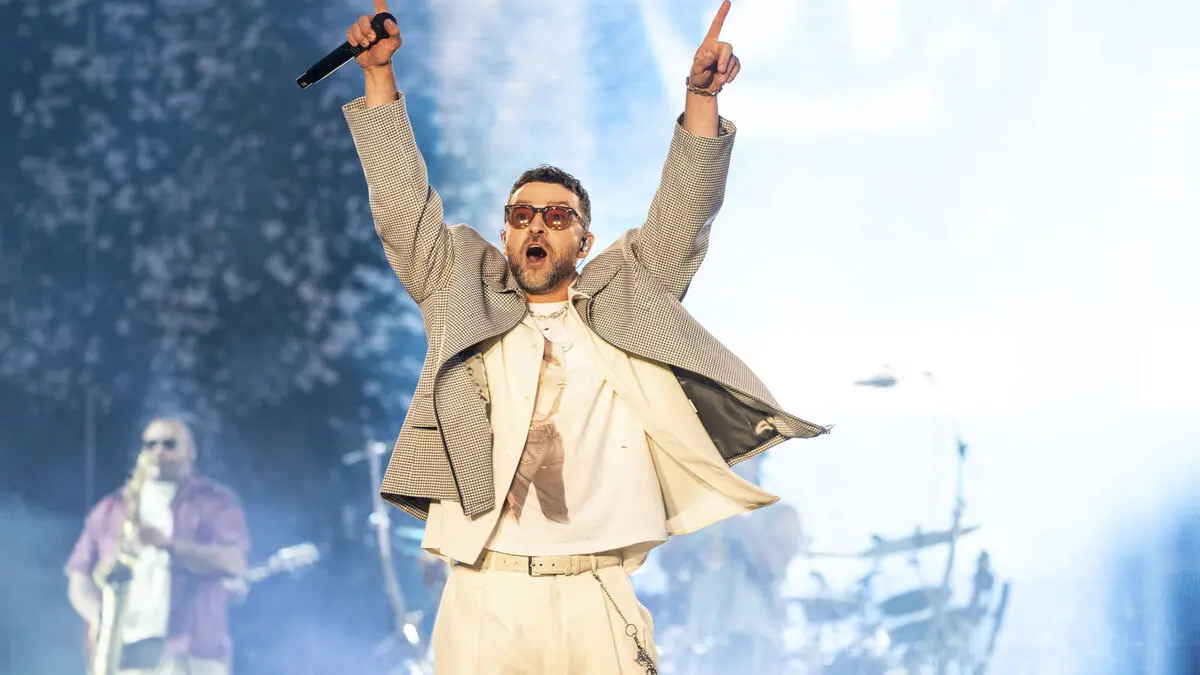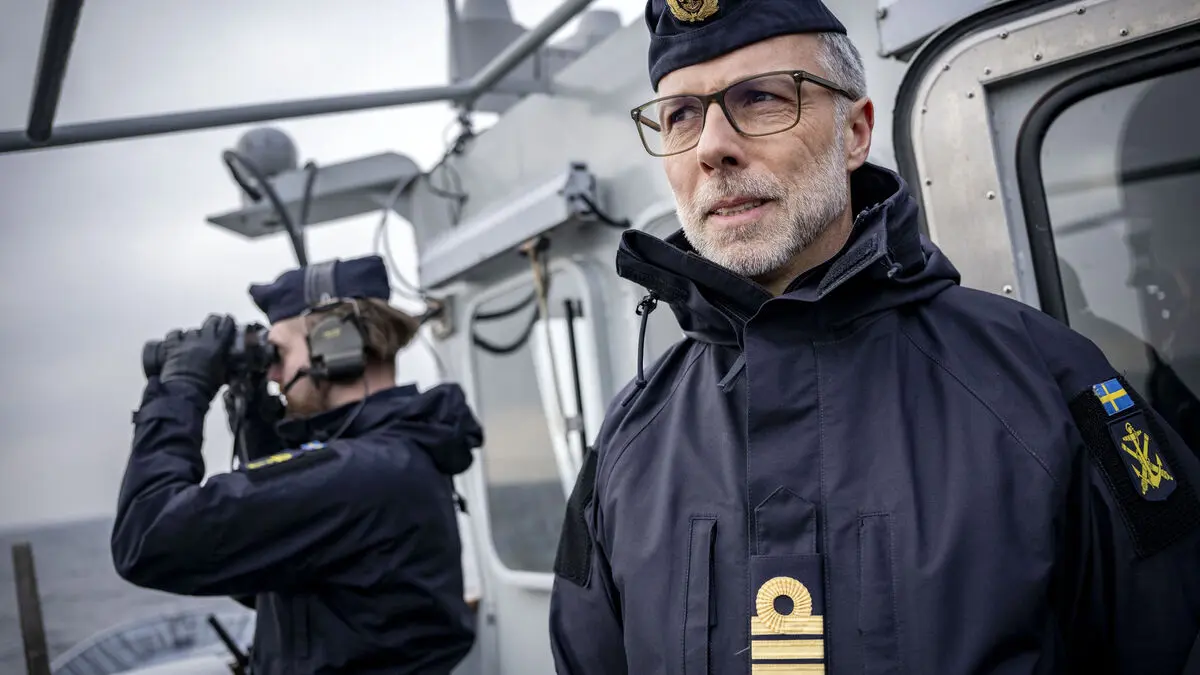Article 4 states that the defense alliance's members must consult urgently when a member country feels threatened. It should not be confused with NATO's portal paragraph Article 5, which explains that an attack on a member country should be seen as an attack on all.
A few hours after the invocation, the Polish government announced that the request had been approved, according to Polish media.
Direct threat
The message about the invocation comes from Prime Minister Donald Tusk in a speech to parliament. This happened after several European leaders said that Russia's nocturnal violation of Polish airspace was likely a deliberate provocation.
19 violations were identified and carefully tracked, says Tusk and adds that there is no information about personal injuries.
Earlier in the morning, Tusk stated that some of the drones constituted a "direct threat".
Russia's Ministry of Defense says, according to Reuters, that Russian drones carried out a major attack in western Ukraine, but denies that the purpose was to attack targets in Poland and expresses itself vaguely about whether they admit that the drones that were shot down on the other side of the border are actually Russian. They also say they are ready to hold talks with Polish authorities.
Kremlin spokesperson Dmitry Peskov says at the same time that the leadership of the EU and NATO "daily" accuses Russia of "provocations", and the highest Russian diplomat in Poland, Andrei Ordash, claims that the drones instead came from Ukraine, according to the regime-loyal news agency Ria.
But according to the EU's Foreign Minister Kaja Kallas, much indicates that the violation was not a mistake, but that Russia acted consciously: "The most serious Russian violation of European airspace since the war broke out", she states in a post on X.
In a later statement during the afternoon, she talks about a way to test NATO's unity.
What he wants to do is to test us, see how far he can go. And he becomes bolder every time, he can be bolder because our response has not been strong enough, she says at a press conference.
Ukraine's President Volodymyr Zelenskyj draws a similar conclusion and calls what happened "an extremely dangerous example".
”Off course”
In Polish media there is information that wreckage from drones has fallen on residential buildings.
”People heard explosions and saw Polish fighter jets. The situation is quite difficult and worrying”, says Mayor Mariusz Zańko in Wyryki Wola according to Polsatnews.
In parallel, Russia's ally Belarus states that the country also shot down drones in its airspace during the night. It is about vehicles that "went off course" after electronic interference from both Kyiv and Moscow, according to the authoritarian country's military, which does not specify whether it is about Russian or Ukrainian drones, writes AFP.
The drones over Poland were shot down by fighter jets, which are said to be both Polish and from allied countries. Which countries are unclear, but for example, the USA has a large military presence there. The Netherlands has confirmed that the country's air force participated in the operation. Sweden did not participate, announces the Swedish Armed Forces.
Henrik Samuelsson/TT
Tina Magnergård Bjers/TT
Facts: NATO's Article 4
TT
The defense alliance NATO's Article 4 means that the members must consult if any of them feel acutely threatened, formally when "any party's territorial integrity, political independence or security is threatened".
Article 4 is a crisis mechanism that has only been invoked eight times in the alliance's over 75-year history. Four of these times, it is Turkey that has used it, in connection with the Iraq and Syria wars. The other four have occurred during the Ukraine war, from 2014 onwards.
The next step on the scale is Article 5, when a NATO member calls for acute help. It is even rarer, and has so far only been invoked once, by the USA after the terrorist attacks on September 11, 2001.





